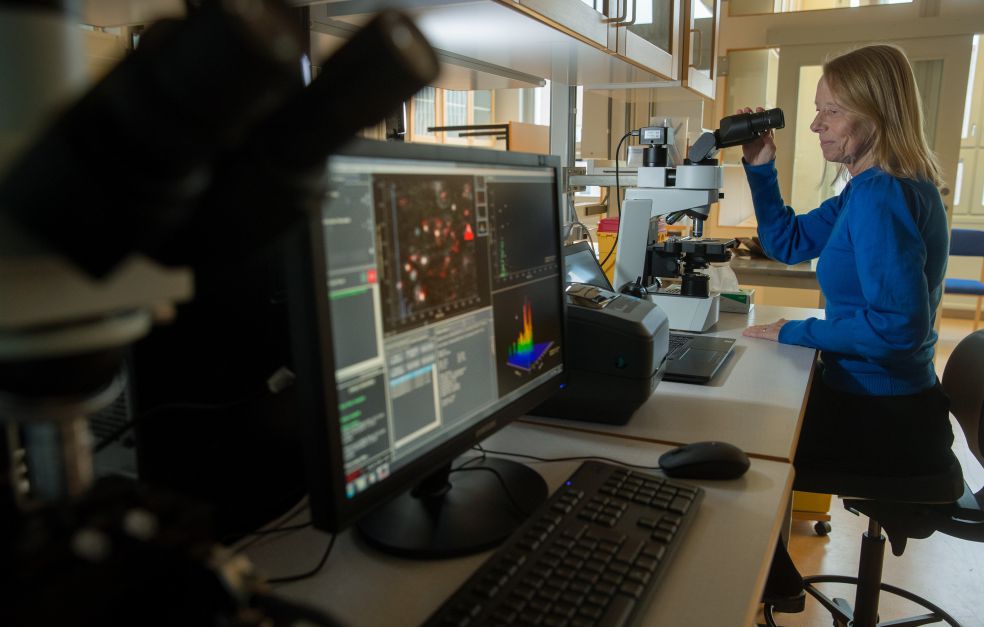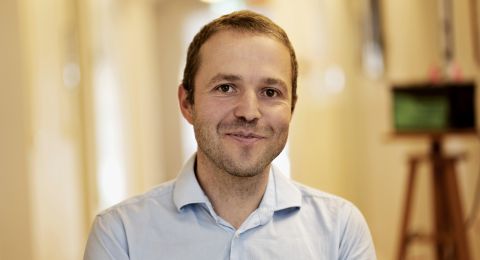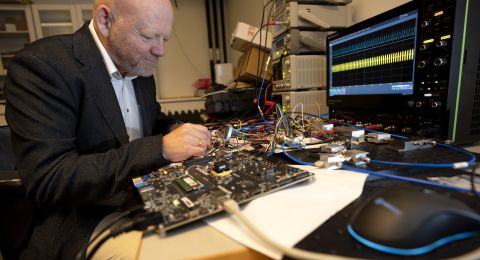Drawing inspiration from nature, it may become possible to design new biological systems capable of protecting against disease and benefiting our health. In future, common bacteria, such as lactic acid bacteria, could be adapted to serve as the stomach’s own vitamin factories. Siv Andersson, a Wallenberg Scholar, is leading the research.
Siv Andersson
Professor of Molecular Evolution
Wallenberg Scholar
Institution:
Uppsala University
Research field:
Comparative genomics and studies of the mechanisms and forces that drives the evolution of the DNA, using bacteria as model systems
The term “bacteria” sometimes has unpleasant connotations. Many people think of stomach upsets on foreign holidays or the growing numbers of resistant bacteria in the health care sector. But most bacteria are harmless. Some of them have even evolved in symbiosis with humans and animals. About two kilos of bacteria inhabit our gut microbiota. These bacteria govern the body’s ecological balance, and it has become popular to use dietary supplements to add “good bacteria” to our diet.
“Bacteria can produce and break down almost all organic matter. They can synthesize amino acids and vitamins, and are often absolutely vital to their hosts,” comments Andersson, who is Professor of Molecular Evolution at Uppsala University.
Full picture of all genes
Over the past 20 years, Andersson has comprehensively mapped the genomes of various bacteria, and established new knowledge about their ecological and evolutionary history. The goal is to gain a deeper understanding of how the genes of bacteria are broken down, copied, moved around, alter their function, and interact to build up a working cell. This may also provide new insights into the impact of bacteria on the environment and human health.
“The Wallenberg Scholar scheme enables us to conduct a high-risk project that may be of great importance in the long run. Also, SciLifeLab gives me access to the very latest instruments, some of which have been funded by Knut and Alice Wallenberg Foundation. It’s a story with a happy ending that shows how advanced research can be made to work in Sweden.”
Lactic acid bacteria in bees
Andersson is now using lactic acid bacteria as one of her model systems. Their primary function is to convert sugar into lactic acid, and they are mainly associated with dairy products, although they are also found in a variety of other environments.
“This group of bacteria are quite harmless – people even pay to eat them.”
Siv is focusing on the lactic acid bacteria that live in the “honey stomach” of bees, and has been reading up on bee-keeping – apiary.
“Bees have several stomachs, but it is fairly easy to remove the honey stomach and study the bacteria inside it. The bacterium grows quickly and has a very small genome, which makes it easy to study.”
To obtain a broad selection of bacteria, she is examining bees from completely separate populations, including the Finnish Åland islands, and the Swedish island of Gotland, both in the Baltic Sea. Different surrounding factors influence the behavior of lactic acid bacteria, and the substances they are able to synthesize. These factors include the bees’ diet, seasonal variations, and the ecosystem in which they live.
Designing bacteria to produce vitamins
The aim is to gain a complete picture of how the DNA of lactic acid bacteria evolves by studying the function and age of the genes, and how they are created. One advantage of determining the age of genes is to find out whether they can be created out of nothing, from completely random DNA sequences, or whether they may derive from old genes that have been broken down.
“Ultimately, our aim is to understand the function of each individual gene in the lactic acid genome, making it easy for us in the future to design bacteria with specific characteristics.”
“We know that many insects use bacteria to synthesize vitamins. And we can see a theoretical possibility of getting such bacteria to establish themselves in the human stomach.”
Vitamin-producing bacteria may offer future potential benefits for patients on special diets, who often suffer from vitamin deficiency, or people who have had gastric bypass surgery and have to take vitamins for the rest of their lives.
Bacteria with complex cell structures
The next step in Andersson’s research is to understand the transition from a simple cell to a more complicated one. Bacteria cells have no nucleus, whereas eukaryotic cells have both a nucleus and membranous organelles of various kinds, which separate the different functions in the cell.
But there are also cells that do not really fit into any of these categories. One of these strange cell types has been named Planctomycetes, since they were originally thought to be fungi. Then scientists believed they were something between prokaryotes and eukaryotes. And now they are thought to be bacteria that have acquired characteristics typical of the eukaryotic cell, such as intracellular membranes and organelles. Some Planctomycetes can even eat other bacteria, which until recently was believed to be beyond the capabilities of any bacteria.
“We’re trying to understand the function of the genes, and the evolutionary process that has resulted in the more complex structure of Planctomycetes. If we get to the bottom of these processes, we might also be able to understand the first stages in the development of the eukaryotic cell.”
“One dream I have is to gain a full understanding of the way that complex inner membrane structures are built up in a cell, while also managing to design new kinds of organelles for new functions,” Andersson says.
Text Nils Johan Tjärnlund
Translation Maxwell Arding
Photo Magnus Bergström






